Renault presents its first 800-volt electric vehicle – the Trafic E-Tech Electric
Another first for the brand is the 800-volt technology, which is being used in a Renault model for the first time. Although Renault has now unveiled the production version of the Trafic panel van at the French transport trade fair, it will be quite some time before the first vehicles are in customer hands: according to the announcement, the electric panel van is set to hit the market at the end of 2026, ‘before further versions of the Trafic E-Tech follow, such as a platform chassis, flatbed or cargo box,’ according to Renault.
Ever since the initial announcement in January, it has been clear that the French manufacturer will be switching to an 800-volt platform for the next generation of light commercial vehicles, which should enable charging times of less than 20 minutes from 15 to 80 per cent. And in the spring, it was announced that a new electric motor with 150 kW of power and 345 Nm of torque would be used – in combination with one of two batteries: an NMC battery for up to 450 kilometres of WLTP range or a cheaper LFP battery that is expected to achieve around 350 kilometres.
Renault has now confirmed all these figures for the world premiere of the production model, but still hasn’t released any data on the energy content of the two battery options. Instead, there is another very relevant statement on the utility value of the new Trafic E-Tech: ‘The combination of a powerful engine and a robust platform enables a towing capacity of two tonnes and a payload of up to 1.25 tonnes (homologation pending).’ The addition in brackets means that the towing capacity has not yet been finally approved – but Renault’s engineers seem so confident that they are communicating this figure officially.
Let’s take a look at the other known figures: as an L1 panel van, the E-Transporter offers 5.1 cubic metres of cargo space, while the L2 offers up to 5.8 cubic metres. The width of 1.92 metres is the same for all models, and the overall height of 1.90 metres is also identical – and should allow access to most underground car parks. The L1 is 4.87 metres long, the L2 5.27 metres. The 40-centimetre difference is entirely due to the longer wheelbase; the front and rear overhangs remain the same.
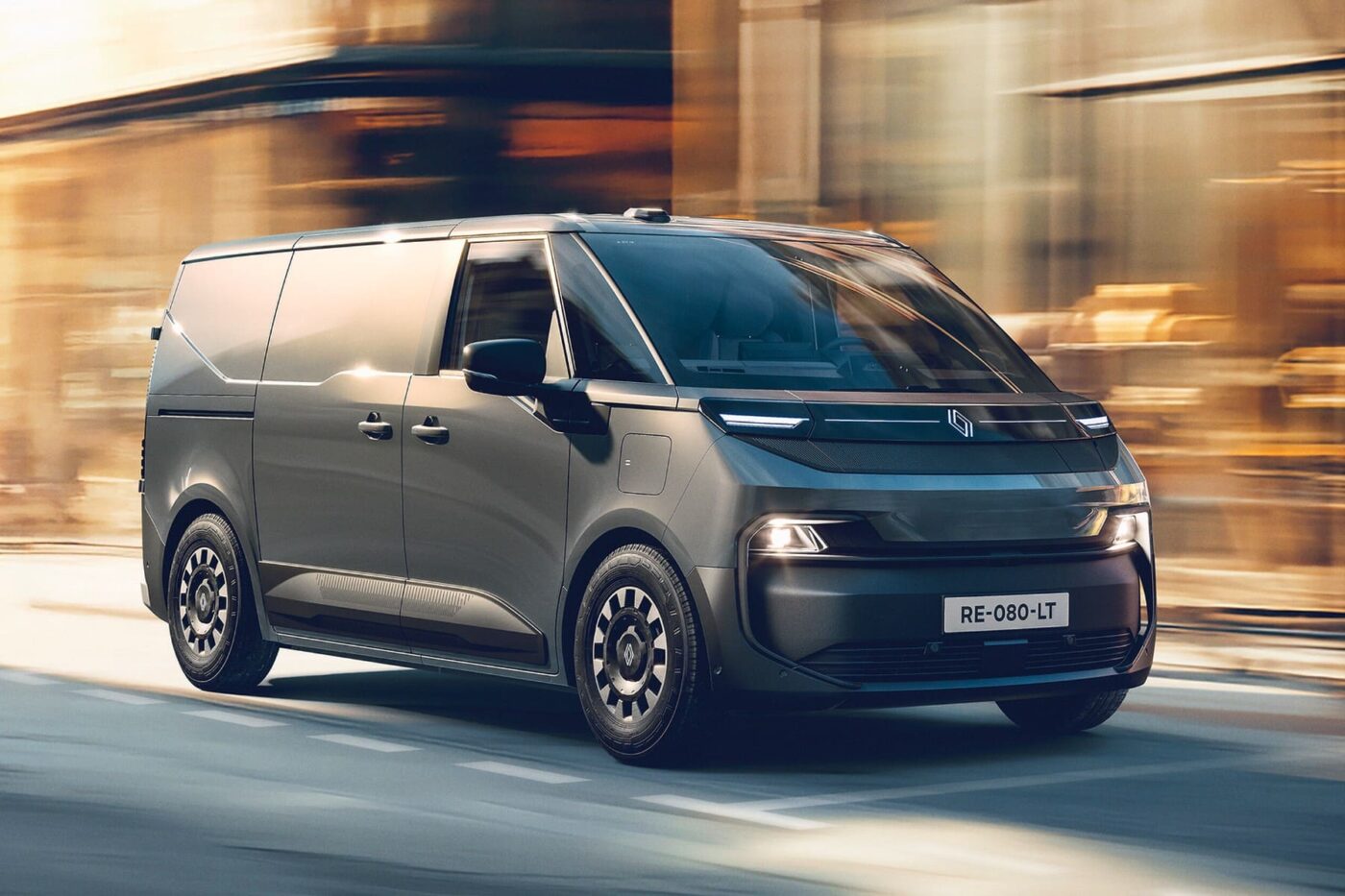
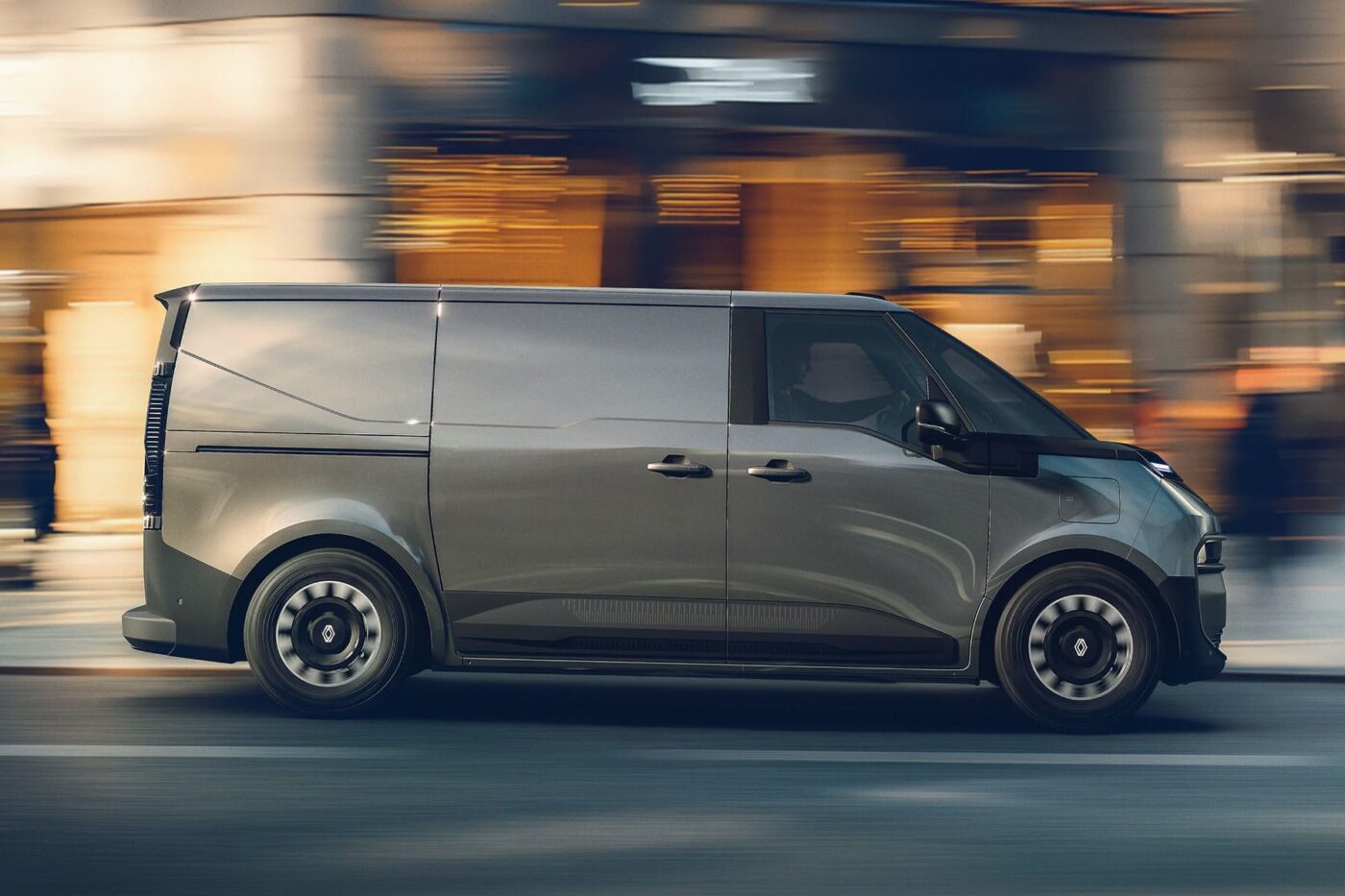

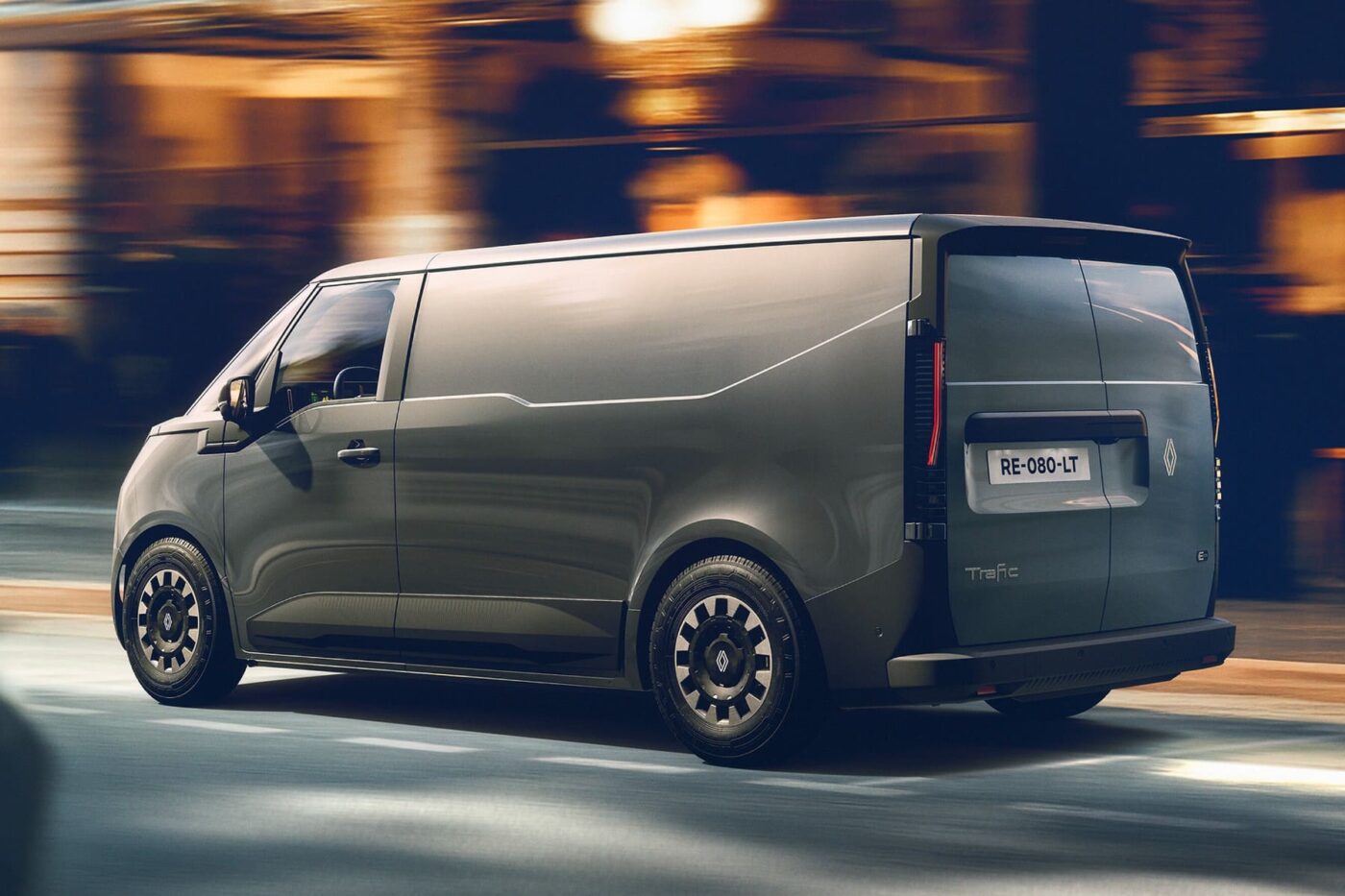
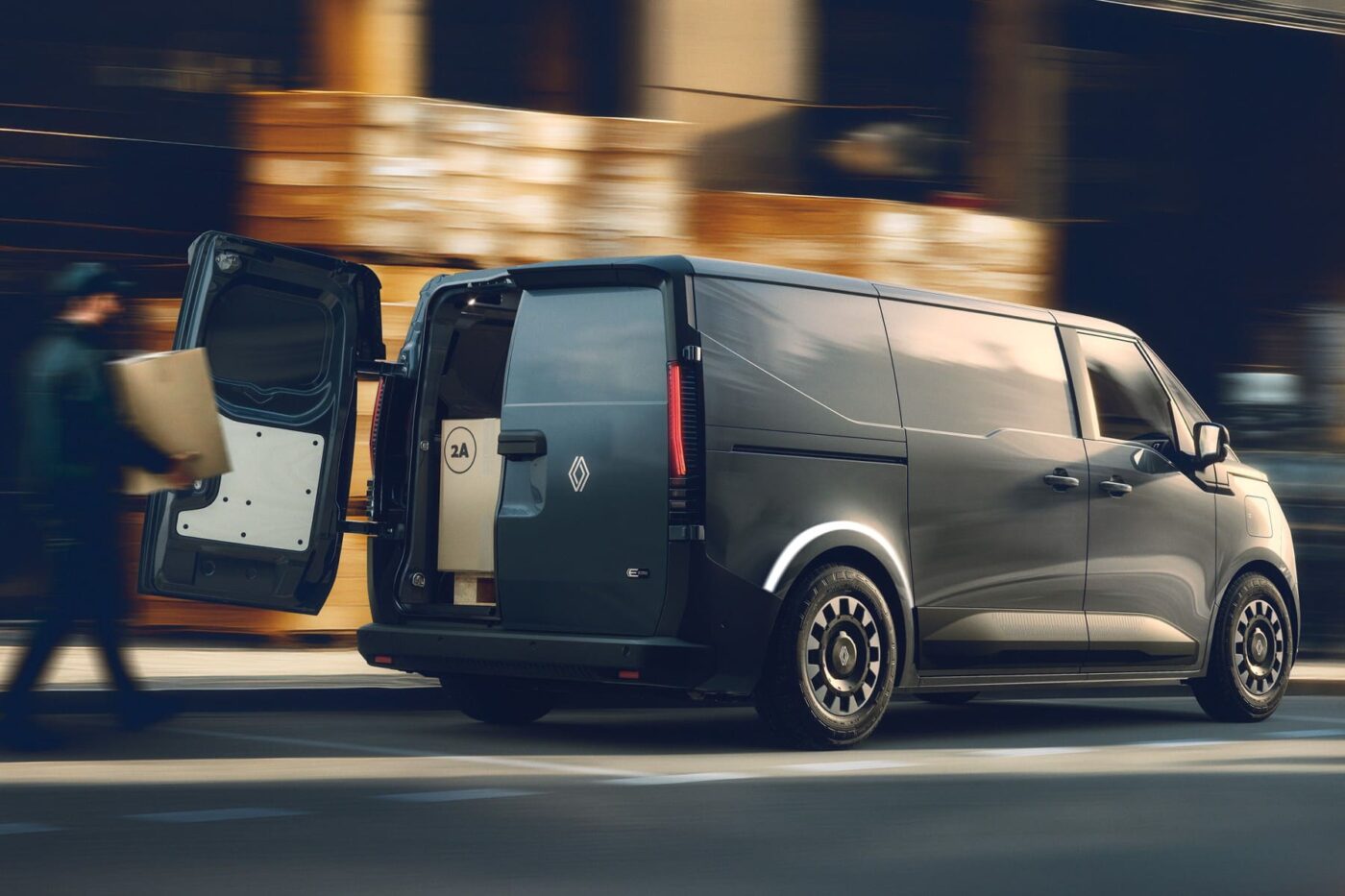
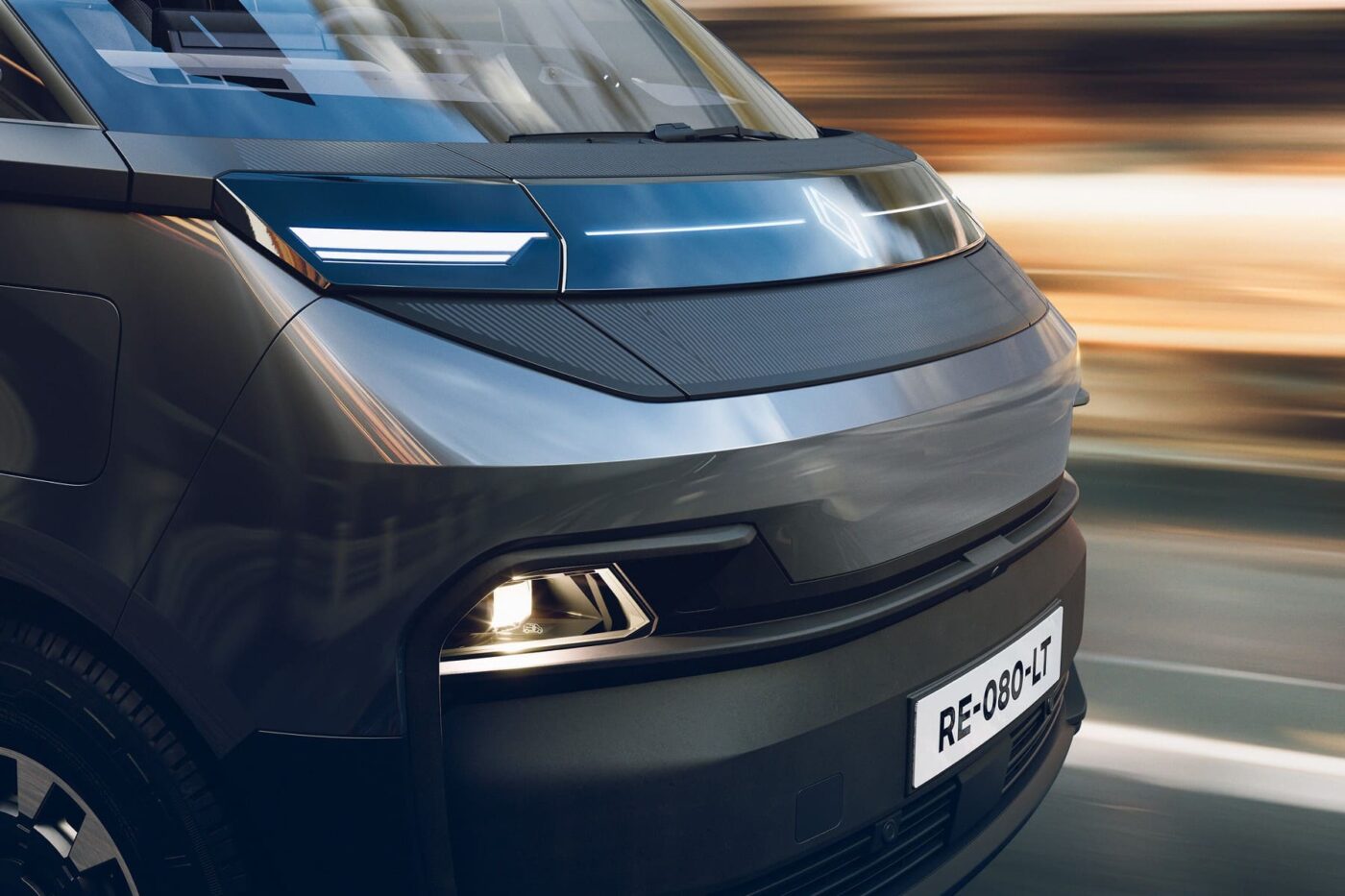
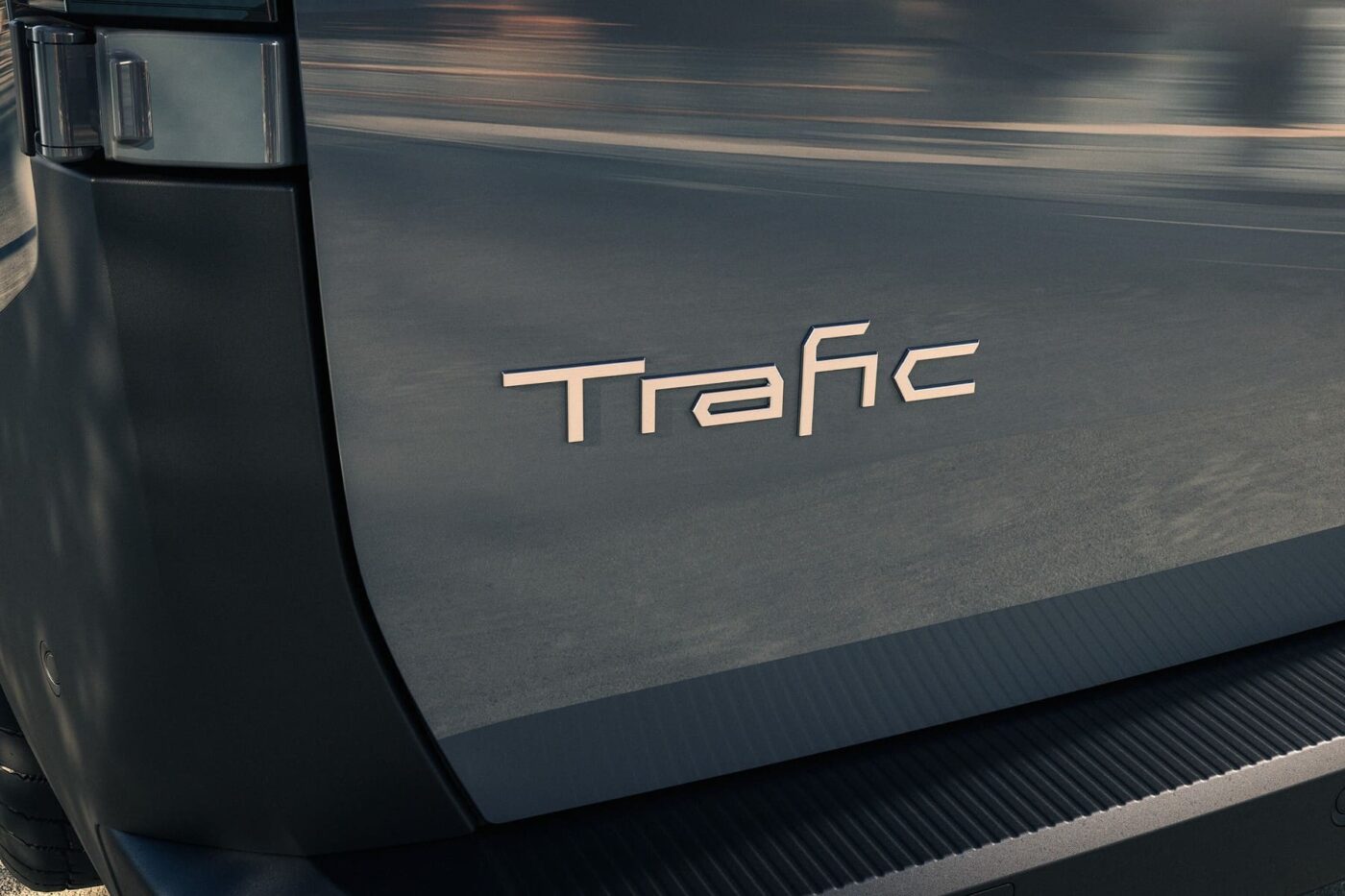
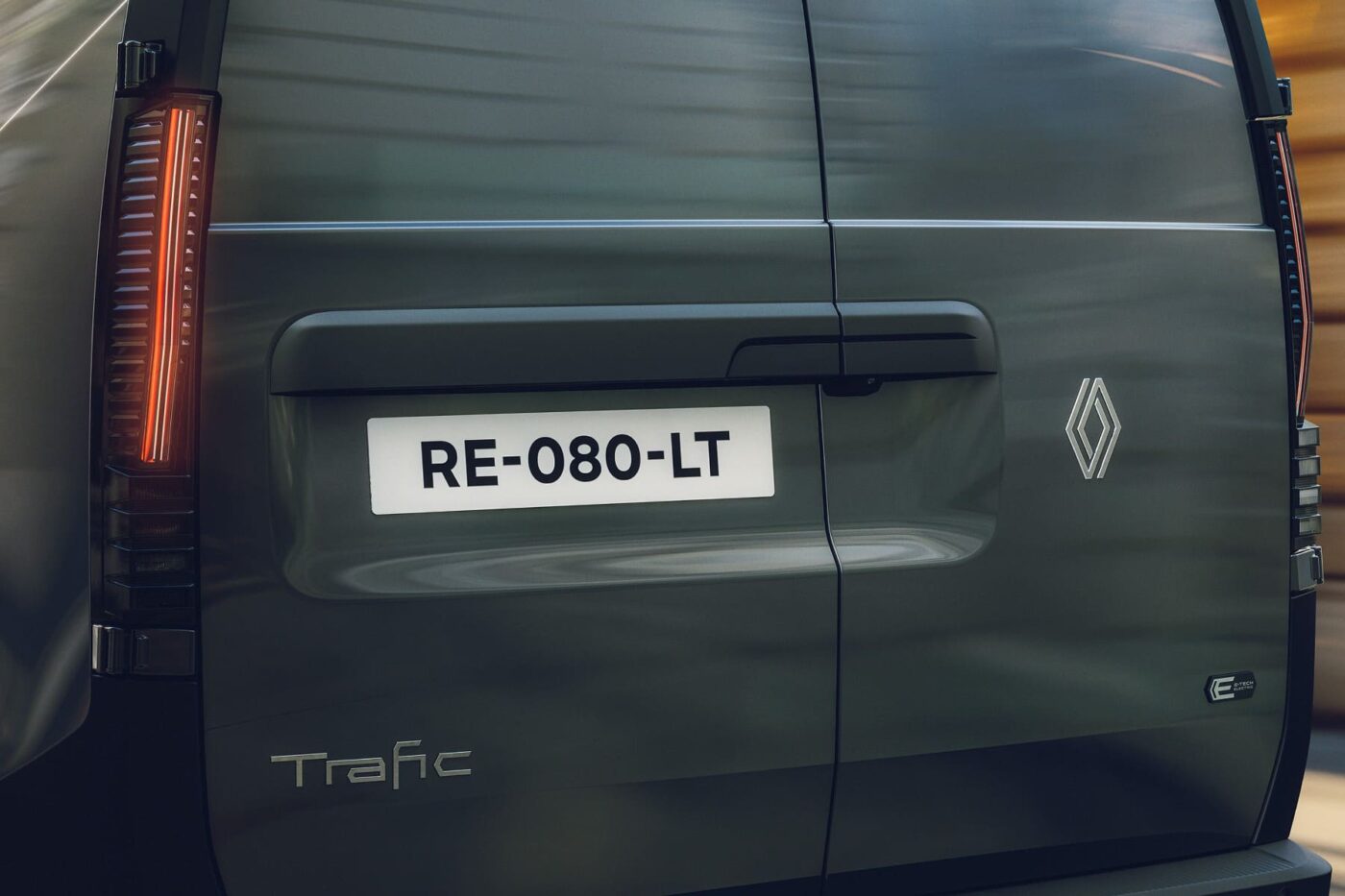

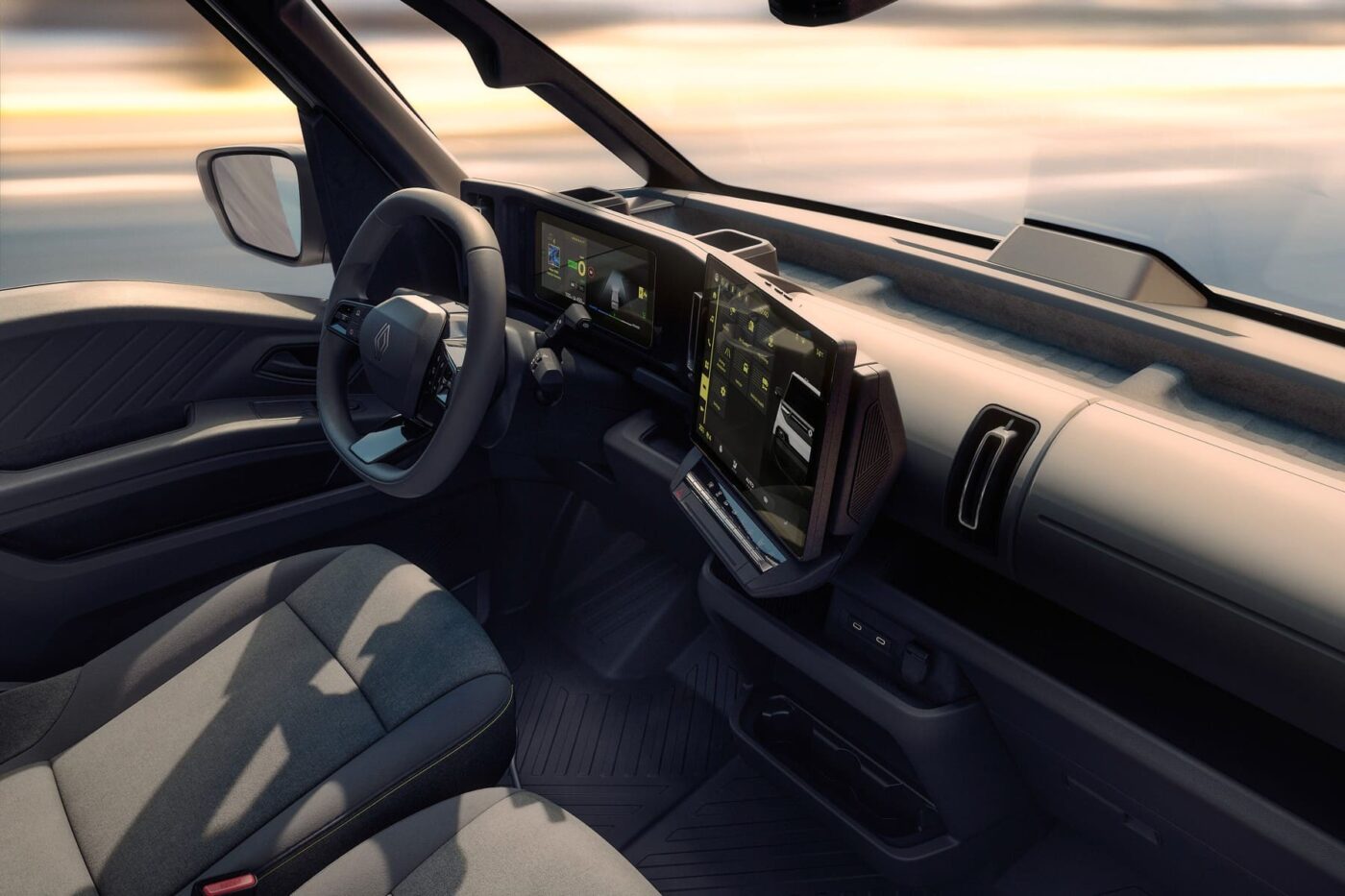

As the new van is based on a purely electric skateboard platform, it should offer an ‘optimal ratio of load capacity to space requirements,’ according to Renault. Since the electric motor is located on the rear axle, the front overhang can be correspondingly short. And since there is no drive between the front wheels, the steering angle can be different. At 10.3 metres, the Trafic E-Tech is said to offer the same turning circle as a Renault Clio – a five-metre van with the turning circle of a small car is likely to be an advantage, especially when used in city centres.
Visually, there are few changes to the production model compared to the concept car from the spring, which was already considered relatively close to production at the time. The rather angular design, the continuous light strip with illuminated brand logo at the front and the black elements at the front, sides and rear are striking features that are intended to give the Trafic E-Tech a distinctive appearance among all the other vans.
A ‘breakthrough’ in software-defined vehicles?
While brand recognition is probably more important for Renault as a manufacturer, customers tend to focus on factors such as utility, cost and other added value when using (electric) vans. Renault is placing a strong emphasis on software-defined vehicles (SDVs), which are intended to set the Trafic E-Tech apart from the competition. The announcement refers to nothing less than a ‘technological breakthrough’. ‘Software is no longer limited to specific functions, as in previous architectures, but shapes the entire vehicle. The centralised software architecture can be updated throughout the vehicle’s lifetime, just like a smartphone or laptop,’ says Renault.
The basis for this is the new CAR OS operating system, developed by Ampere based on Android Automotive OS. The central software is connected to the cloud and can be updated remotely and in real time. In addition, this will also enable personalised offers ‘tailored to the actual use, driving habits and requirements of individual users’. Renault cites the following three points as examples:
- For vehicles with specific functions, such as ambulances, fire engines, police vehicles, refrigerated vehicles and other conversions, special apps can be provided to control the operation of individual components. A similar solution already exists in the OpenR link system for the Renault Master, which allows the creation of individual apps. Here, this option is expanded to include the additional intelligence of the SDV architecture.
- Companies that use their own operating system, e.g. for deliveries, can integrate this into the on-board multimedia system to transmit information (time, route, contacts, comments, etc.) to delivery drivers in real time.
- Fleet users can log into their profile and access a personalised interface with their preferred vehicle settings and apps.
Renault’s infotainment system, known as ‘OpenR’, has also been adapted for vans. Not only has the 12-inch touchscreen been optimised for use in light commercial vehicles, but so has the software: the navigation system has been specially developed for commercial vehicles, “that takes into account vehicle dimensions and load to avoid unsuitable routes.” As consumption data is also taken into account more effectively, the system is also designed to suggest optimised loading stops.
Additional apps are available via the Google Play Store that can be used on the vehicle’s touchscreen, such as the EasyPark parking payment system or music streaming providers such as Amazon Music, Spotify and Deezer. Thanks to the open system design, companies should be able to integrate their own systems into the vehicle’s multimedia system: “Companies using their own operating system, for deliveries, for example, would be able to integrate the new function into the vehicle’s multimedia system in order to send out information in real time (time, route, contacts, remarks, etc.) to delivery drivers on their rounds,” says Renault. “In refrigerated vehicles, for example, a proactive approach is taken to maintain the cold chain, taking into account very detailed real-time information such as the outside temperature and the vehicle’s actual power consumption. If necessary, an additional charging process is scheduled to maintain the cold chain.”
Production of the new Trafic will start next year at the Renault plant in Sandouville. Along with the panel van, two other models will also use the new 800-volt platform via the Flexis joint venture: the Goelette E-Tech with box body stands out from other vans thanks to its reinforced axles, which enable a payload of up to 1.4 tonnes. The Estafette E-Tech, a step-in van, is designed for use in the city, for example, for delivery services.
This article was first published by Sebastian Schaal for electrive’s German edition.

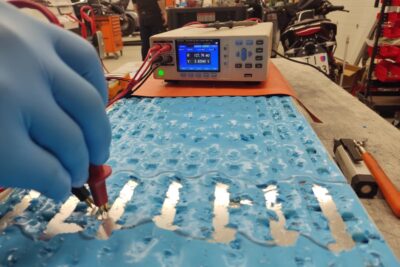
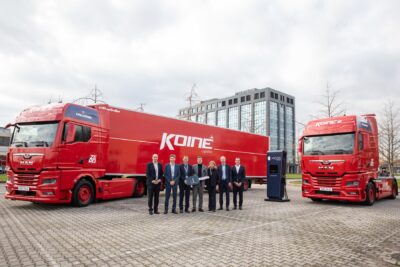

1 Comment